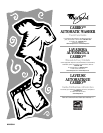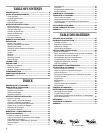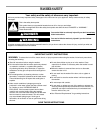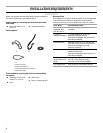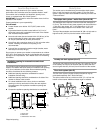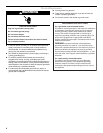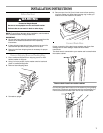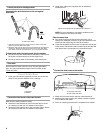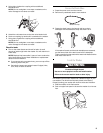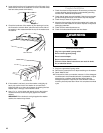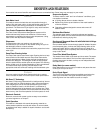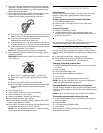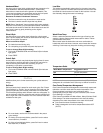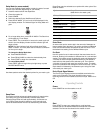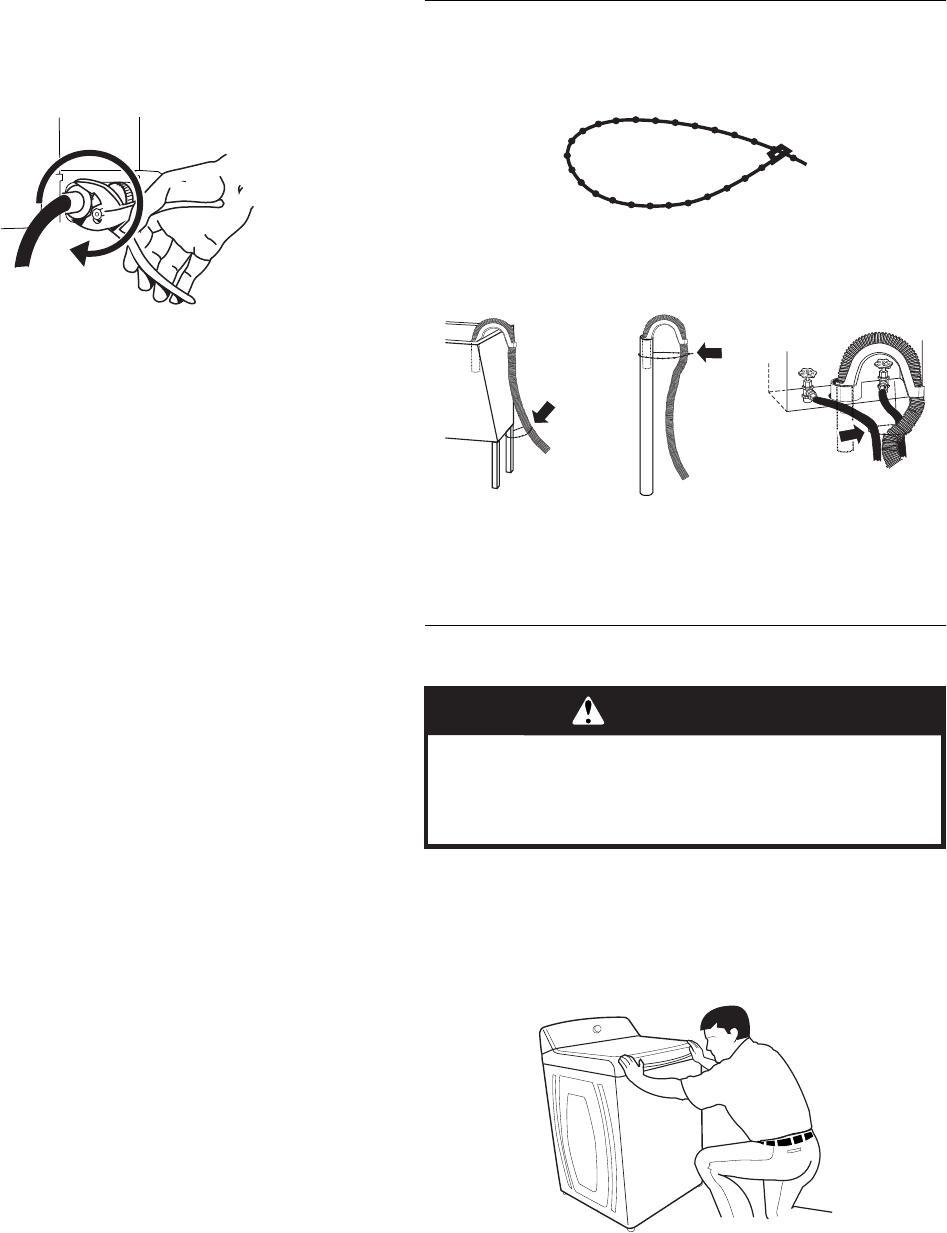
9
4. Using pliers, tighten the coupling with an additional
two-thirds turn.
NOTE: Do not overtighten or use tape or sealants on the
valve. Damage to the valves can result.
5. Attach the cold water hose to the inlet valve labeled cold.
6. Screw on coupling by hand until it is seated on the washer.
7. Using pliers, tighten the coupling with an additional
two-thirds turn.
NOTE: Do not overtighten or use tape or sealants on the
valve. Damage to the valves can result.
Check for leaks
■ Turn on the water faucets and check for leaks. A small
amount of water might enter the washer. You will drain this in
a later step.
NOTE: Replace inlet hoses after 5 years of use to reduce the
risk of hose failure. Record hose installation or replacement
dates for future reference.
■ If you connect only one water hose, you must cap off the
remaining water inlet port.
■ Periodically inspect and replace hoses if bulges, kinks,
cuts, wear, or leaks are found.
Secure the Drain Hose
1. Drape the power cord over the console.
2. Remove any cardboard used to move washer.
3. Fasten the drain hose to the laundry tub leg or drain
standpipe with the beaded tie strap. See view A or B.
If the washer faucets and the drain standpipe are recessed,
put the formed end of the drain hose into the standpipe.
Tightly wrap the tie strap around the water inlet hoses and the
drain hose. See view C.
Level the Washer
One washer foot has been installed at a different height on your
new washer. The other three feet were preset at the factory.
Properly leveling your washer will minimize noise and vibration.
1. Slide the washer to its final location.
2. Push on upper front panel to be sure the washer is on its rear
feet.
COLD
HOT
Beaded tie strap
CBA
WARNING
Excessive Weight Hazard
Use two or more people to move and install washer.
Failure to do so can result in back or other injury.



